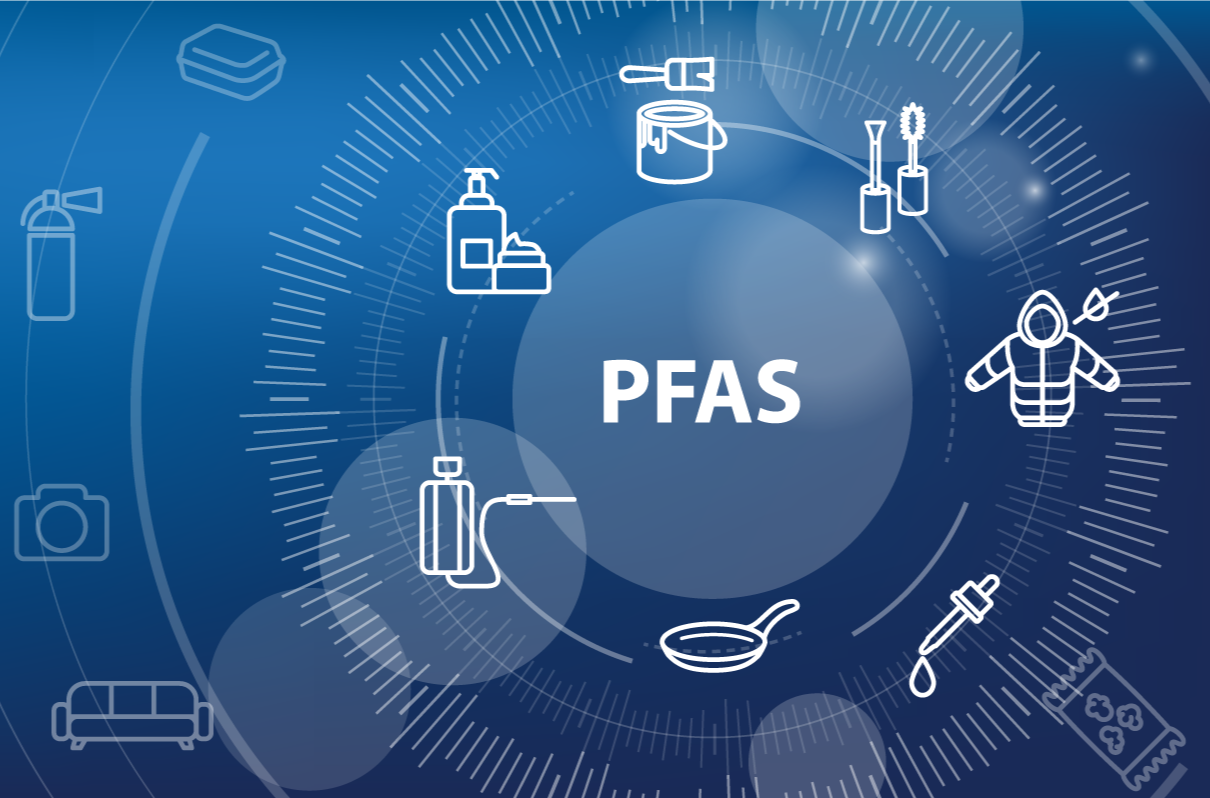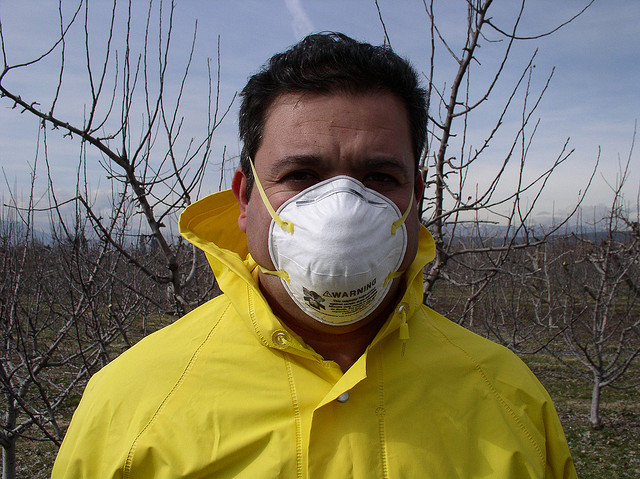The Occupational Safety and Health Administration (OSHA) establishes Emergency Response planning, training, and procedure requirements for employers, as one self-contained part of its multi-pronged Hazardous Waste Operations and Emergency Response (HAZWOPER) Standard (29 CFR 1910.120). This note describes these requirements, and places them in the context of a variety of emergency response planning requirements.
Read MoreAudit, Compliance and Risk Blog
OSHA requirements for employers’ emergency response activities
Posted by Jon Elliott on Wed, Jul 10, 2024
Tags: Health & Safety, OSHA, Safety and Health at Work, workplace safety, Hazardous Waste
EPA designates two perfluoro “forever chemicals” as Superfund hazardous substances
Posted by Jon Elliott on Mon, Jul 01, 2024
On May 8, 2024, the Environmental Protection Agency (EPA) published rule revisions adding two perfluoro chemicals -- Perfluorooctanoic Acid (PFOA) and Perfluorooctanesulfonic Acid (PFOS) – as hazardous substances under the federal Superfund law (Comprehensive Environmental Response, Compensation, and Liability Act (CERCLA)). This listing is the latest regulatory action by EPA tightening controls on per- and poly-fluoroalkyl substances (PFAs); the initiatives are covered under the agency’s “PFAs Strategic Roadmap: EPA’s Commitments to Action 2021—2024,” promulgated in October 2021. The remainder of this note describes the latest action, which finalizes a proposal issued in August 2021 (which I wrote about HERE).
Read MoreTags: Environmental risks, Environmental, EPA, chemical safety, CERCLA, Environment, PFAS, PFOS
US Government issues policy and principles for voluntary carbon markets
Posted by Jon Elliott on Thu, Jun 27, 2024
On Mrbonbonay 28, the Biden administration issued a “Joint Statement of Policy and new Principles for Responsible Participation in Voluntary Carbon Markets, presenting the U.S. government’s approach to advancing Voluntary Carbon Markets (VCMs). The new document was signed by the Treasury Secretary, Agriculture Secretary, Energy Secretary, Senior Advisor for International Climate Policy, National Economic Advisor, and National Climate Advisor, whose responsibilities are most relevant.
Regulatory and market-based programs are steadily increasing opportunities for entities to contract with projects that reduce emissions of carbon dioxide and other greenhouse gases (GHGs), and to claim credit for those “carbon offsets” or “carbon credits.” Some such claims are used to satisfy formal air quality and GHG reduction requirements, while others are touted to enhance entities’ “green” credentials. Programs around the globe compile such claims, and some provide third party validations – but possible “greenwashing” of unjustified claims remains a significant concern. The new VCM Policy and Principles provide federal guidance and expectations. The remainder of this note summarizes the policy perinciples presented in the new Policy.
Read MoreTags: Environmental risks, Environmental, ghg, Environment, Environmental Policy, Joe Biden, VCMs, Carbon markets
Since the 1980s, the Occupational Safety and Health Administration (OSHA) has required most employers to protect their workers from workplace chemical hazards, and to train workers to protect themselves. Most employers are subject to OSHA’s Hazard Communication Standard (HCS; 29 CFR 1910.1200), or to variants imposed by states delegated OSHA’s authority. Many of the present requirements were established by massive revisions adopted in March 2012, when OSHA recast HCS to align it with the United Nations-sponsored Globally Harmonized System of Classification and Labeling of Chemicals (GHS). OSHA’s 2012 revisions conformed the US to GHS Revision 3, which was issued internationally in 2002. The most obvious change was the adoption of Safety Data Sheets (SDSs) to replace longstanding Material Safety Data Sheets (MSDSs), but employers faced a series of deadlines during 2013-2016.
On May 20, 2024, OSHA significantly updated HCS requirements for the first time since 2012, primarily to reflect GHS changes through Revision 7 (which was published in 2017). OSHA’s revisions take effect on July 19. The remainder of this note summarizes these changes, based on the affected subsections or appendices.
Read More
Tags: OSHA, Safety and Health at Work, workplace safety, Hazardous Waste, Hazard Communication, Hazardous Chemicals
EPA announces final phase-outs of commerce in remaining asbestos-containing products
Posted by Jon Elliott on Mon, May 20, 2024
On March 28, 2024, the Environmental Protection Agency (EPA) published phase-out schedules leading to a ban on the remaining permissible uses of chrysotile no later than December 31, 2037. EPA applies expanded authority provided as part of amendments adopted to the Toxic Substances Control Act (TSCA) in 2016; EPA first attempted to ban asbestos products in 1989 but was partially blocked by litigation. These rules finalize a proposal from April 2022 (which I wrote about HERE). The remainder of this note discusses the rule, and the history of this round of rulemakings since 2016.
Tags: Environmental, EPA, tsca, Toxic, Toxics Release, asbestos
On April 17, the US Environmental Protection Agency (EPA) issued a memorandum announcing its Strategic Civil-Criminal Enforcement Policy (“the Policy”). The Policy provides direction to EPA’s civil and criminal enforcement staffs, seeking to ensure that the two sometimes-disjoint groups coordinate training, procedures, and enforcement choices. The remainder of this note summarizes this new Policy.
Read MoreTags: EPA, Environmental Policy, environmental law, Civil-Criminal Enforcement Policy
EPA updates and expands mandatory greenhouse gas emission reporting requirements
Posted by Jon Elliott on Mon, May 06, 2024
On April 25, 2024, the US Environmental Protection Agency (EPA) published very extensive technical revisions to its Greenhouse Gas Reporting Program (GHGRP), which requires thousands of facilities and organizations to report annual emissions of greenhouse gases (GHGs) (40 CFR part 98). These revisions finalize proposals published in June 2022 and May 2023. (I wrote about the second set HERE). The remainder of this note summarizes these changes. (I’ve written about EPA’s mandatory GHG reporting program several times, including HERE).
Read MoreTags: Environmental risks, Environmental, EPA, Greenhouse Gas, ghg, greenhouse, Environment, GHGRP
EPA requires worst case release planning by onshore facilities
Posted by Jon Elliott on Tue, Apr 23, 2024
On March 28, 2024, the US Environmental Protection Agency (EPA) adopted requirements that qualifying onshore non-transportation-related facilities prepare Facility Response Plans (FRPs) to address possible “worst case” discharges of hazardous substances into navigable waters or related areas. These new requirements fulfill a mandate imposed in 2020 after environmental groups successfully sued EPA for failing to issue such rules in the 30 years following 1990 amendments to the Clean Water Act (CWA) directed EPA to do so (Environmental Justice Health Alliance for Chemical Policy Reform, et al. v. EPA). The rest of this note discusses these new requirements, in the context of CWA facility preparation requirements.
Read MoreTags: Environmental risks, Environmental, EPA, CWA, Clear water, Hazardous Waste, Environment, Environmental Policy
The Occupational Safety and Health Administration (OSHA) is authorized to inspect regulated workplaces, although it generally inspects only workplaces deemed highly hazardous (which typically are targeted sector-wide by OSHA National Emphasis Programs (NEPs) or their regional or state equivalents), or those subject response to complaints or reported incidents of injury or illness (I&I). On April 1, OSHA revised provisions in its inspection standard (29 CFR 1903) clarifying which “employee representatives” can accompany an inspector during a walk-around; the revisions are to become effective on May 31. This revision reflects part of broader inspection revisions proposed on August 30, 2023 (which I wrote about HERE). The rest of this note discusses the change to walk-around provisions.
Read MoreTags: Health & Safety, OSHA, Safety and Health at Work, workplace safety
Biden Administration proposes limited increases in OSHA budget
Posted by Jon Elliott on Mon, Apr 08, 2024
On March 11, the Biden Administration issued its budget proposal for federal Fiscal Year (FY) 2025 (October 1, 2024 through September 30, 2025). The administration proposes a $655.5 million budget for the Occupational Safety and Health Administration (OSHA), a 3.7% ($32.1 million) increase above OSHA’s adopted 2023 budget of $632.4 million (the Administration had proposed $701 million). OSHA is presently operating under the latest FY 2024 Continuing Budget Resolution (since no budget has been adopted for FY 2024 (I wrote about the Administration’s FY 2024 proposal HERE). Even if an FY 2025 budget is enacted, political differences make significant reductions from this proposal likely, but it’s worth reviewing the proposal as a reflection of the Administration’s ongoing environmental priorities. The remainder of this note summarizes the Biden Administration proposal.
Read MoreTags: Health & Safety, OSHA, Safety and Health at Work, Cal/OSHA, FTE, Joe Biden, USA









